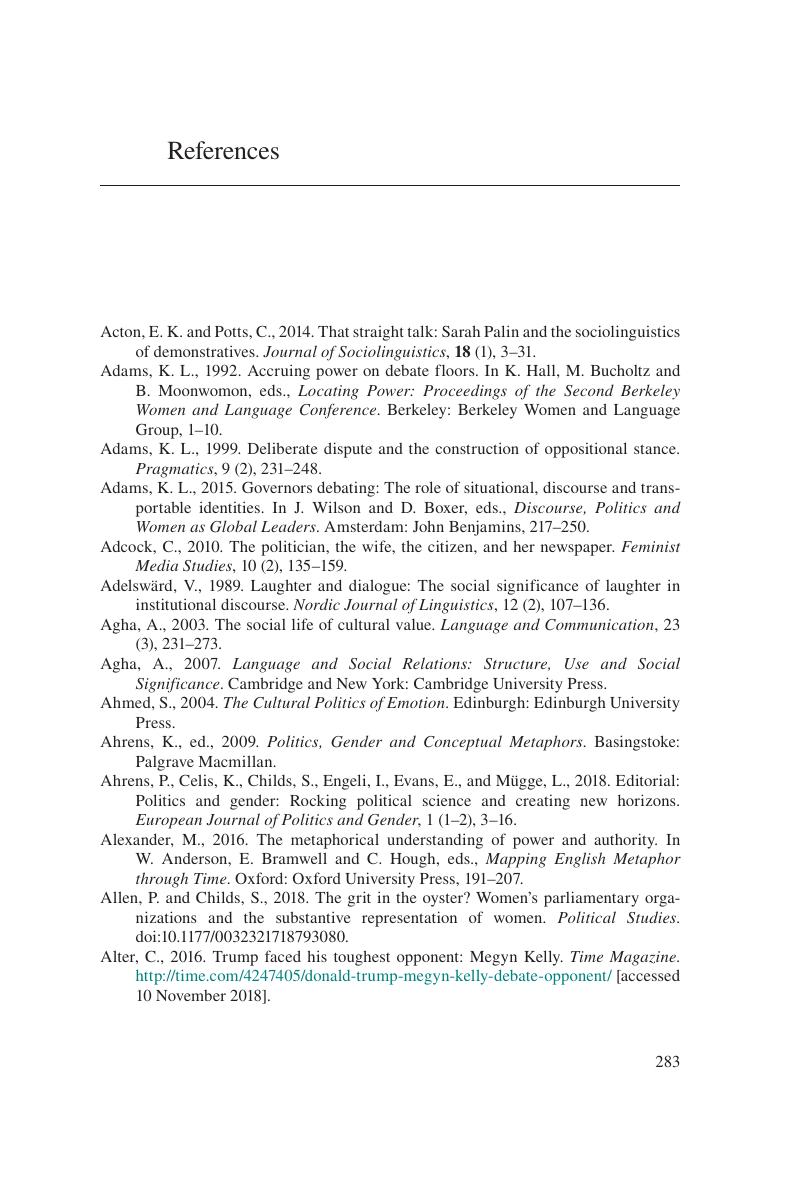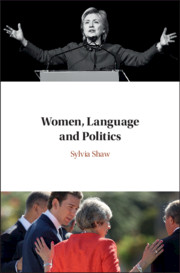Book contents
- Women, Language and Politics
- Women, Language and Politics
- Copyright page
- Dedication
- Contents
- Figures
- Tables
- Acknowledgements
- Abbreviations
- Transcription Conventions
- 1 Introduction
- 2 Gender and Language in Political Institutions
- 3 Women’s Linguistic Participation in a Traditional Male-Dominated Forum – The UK House of Commons
- 4 Women’s Linguistic Participation in the New Devolved Assemblies of the UK
- 5 Barriers to Women’s Participation in Politics
- 6 Case Study: Theresa May
- 7 Case Studies: Julia Gillard and Hillary Clinton
- 8 Women, Language and Politics
- Book part
- Notes
- References
- Index
- References
References
Published online by Cambridge University Press: 08 May 2020
- Women, Language and Politics
- Women, Language and Politics
- Copyright page
- Dedication
- Contents
- Figures
- Tables
- Acknowledgements
- Abbreviations
- Transcription Conventions
- 1 Introduction
- 2 Gender and Language in Political Institutions
- 3 Women’s Linguistic Participation in a Traditional Male-Dominated Forum – The UK House of Commons
- 4 Women’s Linguistic Participation in the New Devolved Assemblies of the UK
- 5 Barriers to Women’s Participation in Politics
- 6 Case Study: Theresa May
- 7 Case Studies: Julia Gillard and Hillary Clinton
- 8 Women, Language and Politics
- Book part
- Notes
- References
- Index
- References
Summary

- Type
- Chapter
- Information
- Women, Language and Politics , pp. 283 - 314Publisher: Cambridge University PressPrint publication year: 2020



